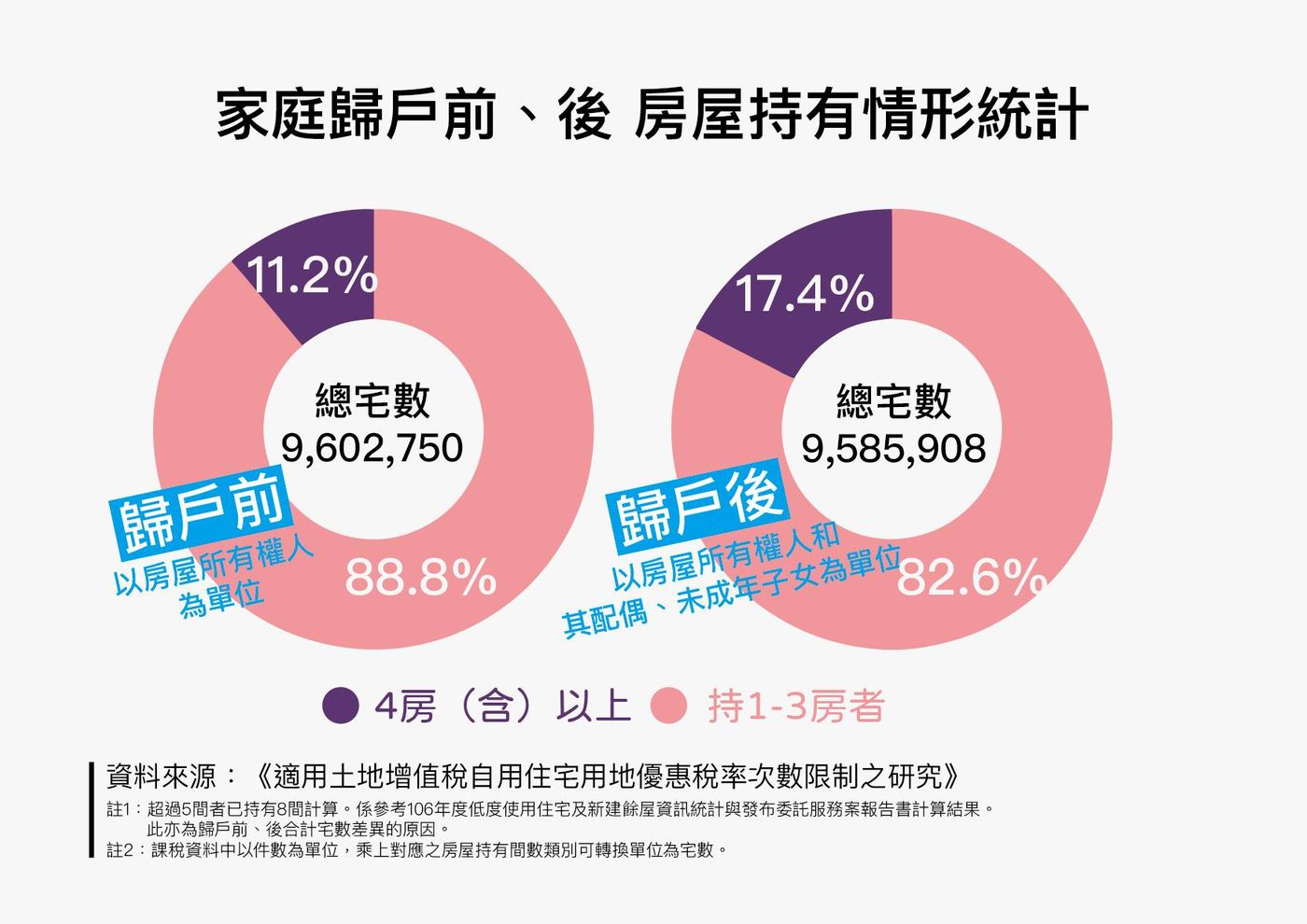Response to the Ministry of the Interior: Is it true that the "hoarding problem is limited"?
(The original release date of this article was 2020/06/03, in response to the Ministry of the Interior's 2020/05/26 press release "Data show that Taiwan's housing hoarding problem is limited and the overall trend is toward equilibrium")
Last week, the Ministry of the Interior issued a press release with great fanfare saying that "the problem of housing hoarding is limited". By the way, other advocates are "relying on intuitive imagination to cause unnecessary confrontation and social costs."
Well, then we will also respond from the level of data and facts, and we want to talk about it with everyone. I've already had enough 7%" is such a nonsense.
Taking this obviously problematic data, instead of trying to make it clearer, I kept talking all day long, with a face like "we use data to talk, what you are talking about is nonsense". Really annoying.
[Hoarding data does not have national homeownership]
The Ministry of the Interior used the first paragraph of fiscal and tax data to demonstrate that "the phenomenon of hoarding of houses by people with multiple houses is not obvious" is completely wrong. They claim that "multiple dwellers who own more than four houses collectively own about 477,000 houses, accounting for only 4.52% of the total number of houses".
But in fact, this data only sees multi-family dwellers who own more than four houses "in the same county and city." Why? Because they did not use the data after the national household registration. The data used by the Ministry of the Interior is the aggregated result of the statistics of "individual counties and cities".
That is to say, if A has a room in Taipei, Hsinchu, Taoyuan, and Tainan, are you a multi-household (more than four houses) or a small house? In the data used by the Home Office, you are counted four times as "holding a house", not "a person with multiple houses (more than four houses)".
I won’t expand on the post too much. In short, after using the correct national household registration data, in fact, the houses held by multi-family dwellers are not 477,000, but 1.769 million, which is almost 1.3 million more; the proportion is not 4.52 of the total number of houses. %, but 15.1%.

[Holding status and vacant house are linked to no family return home]
Another argument of the Ministry of the Interior is that "more than half of the vacant houses are owned by one-households, and the vacant houses in the hands of multi-households account for only 7% of all vacant houses." The data obtained by checking the table; and with the housing property information table, the problem of returning to the household appears again.
The conclusion is that the Ministry of the Interior has carried out the "national household repatriation" data this time, but missed the "family repatriation". What happens without a family home? After reading the data from the Ministry of the Interior, I believe everyone has wondered, "If more than half of the vacant houses are owned by one-household people, where do these people live?" One of the answers is the return of families.
A certain A, his wife and a minor child each own a house. If there is no family repatriation, it will be calculated as "three people each own a house". If their family lives in one of the houses and the other two are vacant houses, since the two vacant houses are owned by A’s wife and children respectively, they will be “vacant houses created by the one-roomer”.
But is this really an "empty house created by a one-room owner"? Not really. Therefore, it will be calculated as a more accurate "A's family holds three houses" after the family returns.
Similar to the national household registration, the information on the household after household registration will also increase the concentration of houses. Public information on family repatriation is even more difficult to find. At present, we can only find data from 2007, which shows that after the family repatriation, the number of houses held by people with multiple houses has increased by 600,000. I don’t know how much it is now? Looking forward to the administrative departments with various data, can provide more new and improved data Hello.

[The number of mothers is seriously underestimated and distorted, and the conclusion is of course wrong.]
Because of the lack of home-return calculation, we can see that the “number of houses owned by people with more than four houses (proportion)” calculated by the Ministry of the Interior is a state of substantial underestimation. The mother numbers are all wrongly underestimated, and of course the numbers drawn out are wrong.
Of course, since the government has not made the “home ownership (home ownership)” public, we can only know that the Ministry of the Interior’s calculations are wrong, but the correct data requires the Ministry of the Interior to “present a more detailed factual basis.”
We believe that "ask first if there is, and then ask what to do" is a good attitude in policy discussions. If even “is the phenomenon of house hoarding serious?” unable to clarify, or even simply wrong information, it may lead to unnecessary confrontation and social costs.
It is suggested that the Ministry of the Interior should recalculate the two sets of data on "householding (home-based households nationwide)" and "low-use (electricity) houses", and come up with a "more detailed factual basis" as claimed in its press release.
Link to press release: https://ours.org.tw/2020/06/02/vacanthouse/
Like my work? Don't forget to support and clap, let me know that you are with me on the road of creation. Keep this enthusiasm together!

- Author
- More